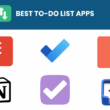Table of Contents Show
In today’s fast-paced economic climate, maintaining a healthy cash flow is more than just a financial metric; it’s a vital sign of a business’s health and efficiency.
Cashflow optimization isn’t just about keeping the lights on; it’s about strategic growth, stability, and creating a buffer against future financial uncertainties.
This article delves into the essential strategies and practices that can help businesses streamline their cash flow, ensuring they not only survive but thrive.
What is a cash flow?
Cash flow represents the net amount of cash and cash equivalents being transferred into and out of a business.
At its core, it’s the lifeblood that keeps the operations going. While profit is often seen as the primary indicator of a business’s success, cash flow is equally important, if not more so.
A business can be profitable yet still struggle if cash inflow doesn’t keep pace with cash outflow.
Core Principles of Cashflow Optimization
Successful cash flow management hinges on several core principles:
- Timely Invoicing: Sending invoices as soon as services are delivered or products are sold ensures faster payment.
- Expense Management: Keeping tabs on outflows is crucial; every dollar saved is a dollar that can be used elsewhere in the business.
- Investment in Growth: Wise reinvestment of profits can lead to improved cash flow over time.
Strategies for Cashflow Optimization
Optimizing cash flow is critical for the financial health of any business, ensuring that it can meet its financial obligations and invest in growth opportunities.
Here are some effective strategies that businesses can implement to optimize their cash flow:
1. Improve Invoice Practices
Effective invoicing is crucial for maintaining a steady cash inflow. Here are a few strategies to enhance your invoicing practices:
- Automate Invoicing: Use software to automate the invoicing process, which helps in sending invoices promptly and reduces human error.
- Terms and Conditions: Clearly define payment terms on every invoice to avoid ambiguity and encourage timely payments.
- Invoice Financing: Consider using invoice financing to receive immediate payment, which is especially useful for businesses with long invoice cycles.
2. Streamline Accounts Receivable
Tightening up accounts receivable can significantly improve cash flow. Follow these steps to improve your account receivables:
- Credit Checks: Perform credit checks before extending credit to customers to reduce the risk of non-payment.
- Prompt Payment Incentives: Offer discounts for early payments to encourage customers to pay sooner rather than later.
- Effective Collection Policies: Establish and enforce policies for collecting overdue accounts, including sending reminders and making phone calls.
3. Manage Inventory Efficiently
Inventory management can tie up a significant amount of cash, but optimized inventory practices can free up resources:
- Just-In-Time (JIT) Inventory: Adopt JIT inventory systems to reduce inventory levels and minimize holding costs.
- Regular Audits: Conduct regular inventory audits to prevent overstocking and identify slow-moving items that could be discounted or discontinued.
- Dropshipping: Consider dropshipping, which allows businesses to transfer customer orders and shipment details to either the manufacturer or a wholesaler, who then ships the goods directly to the customer.
4. Control and Reduce Expenses
Reducing outflows can preserve cash. You will need to make timely decisions to help manage your cash management and reduce your expenses so that you can easily optimize your cash flow.
To get started with this, follow the steps below:
- Cost-Benefit Analysis: Regularly conduct cost-benefit analyses to ensure that spending aligns with business goals and provides sufficient returns.
- Cut Non-Essential Expenses: Review expenses periodically to identify and eliminate non-essential spending.
- Negotiate with Vendors: Regularly renegotiate terms with suppliers or look for alternative suppliers to reduce costs.
5. Leverage Technology for Efficiency
Incorporating technology can lead to significant improvements in cash flow management. You can make use of tools and software to help you do the crunch work. Let the technology handle the tiresome work, so that you can spend more time on strategic decision making.
- Financial Software: Use financial management software for better visibility and control over cash flow.
- Online Payment Solutions: Implement online payment solutions that facilitate faster receipt of payments from customers.
- Automated Reporting Tools: Utilize tools that offer real-time reporting on your financial status, helping you make informed decisions quickly.
6. Optimize Payment Terms
Balancing the payment terms you offer to customers and those you negotiate with your suppliers can improve cash flow:
- Extend Payable Terms: Where possible, negotiate longer payment terms with suppliers to keep cash longer.
- Shorten Receivable Terms: Conversely, tighten receivable terms where possible to get cash into the business sooner.
7. Forecast and Monitor Cash Flow
Regular cash flow forecasting and monitoring are vital. Make a chart or table that can help you foresee the upcoming expenses, so you can utilize your cash at hand wisely.
- Cash Flow Projections: Regularly project cash flow based on historical data and future expectations to anticipate needs and surpluses.
- Regular Monitoring: Keep a close eye on cash flow statements to catch and address discrepancies or unexpected changes quickly.
8. Use External Financing Wisely
Access to external financing can be a strategic tool for cash flow management:
- Lines of Credit: Establish lines of credit to use in cash-short periods, ensuring you can always cover your obligations.
- Short-term Loans: Utilize short-term loans to overcome temporary cash flow issues, especially to seize growth opportunities that require quick funding.
Check this out:
Working Capital Management
Working capital management is a crucial aspect of financial management that focuses on the optimal balance between a company’s current assets and current liabilities.
Effective management of working capital ensures that a business has sufficient cash flow to meet its short-term obligations and operational needs.
Here’s a detailed look at the core components, strategies, and benefits of working capital management.
Core Components of Working Capital
- Accounts Receivable: This refers to the money owed to a business by its customers. Efficient management ensures that receivables are collected promptly to maintain a steady inflow of cash.
- Inventory: Inventory management is critical; too much inventory can tie up valuable cash, while too little can lead to stockouts and potential sales losses.
- Accounts Payable: This represents the money a business owes to its suppliers. While extending payables can improve cash on hand, it’s important to balance this with maintaining good supplier relationships and taking advantage of any discounts for early payment.
Strategies for Effective Working Capital Management
- Cash Management: Identify the cash balance which allows for the business to meet day-to-day expenses, but reduces cash holding costs. This involves short-term forecasting and planning to ensure liquidity.
- Improving Receivables: Techniques include:
- Credit Management: Assessing the creditworthiness of customers to avoid bad debts.
- Invoice Management: Ensuring invoices are clear and sent out promptly.
- Collection Strategies: Implementing effective collection policies such as discounts for early payment and penalties for late payments.
- Inventory Optimization: Key strategies include:
- Just-in-Time (JIT): This approach minimizes inventory levels by organizing the receipt of stock just as it is needed in the production process.
- ABC Analysis: Segmenting inventory into categories based on value and turnover rate to prioritize management efforts.
- Demand Forecasting: Using sales data to accurately predict inventory needs, reducing the costs associated with excess inventory.
- Payables Management: While it may be tempting to delay payments to suppliers to conserve cash, strategic decisions should be made to avoid damaging relationships. Strategies include:
- Negotiating Terms: Working with suppliers to extend payment terms.
- Taking Advantage of Discounts: Making payments early when discounts are offered.
Benefits of Effective Working Capital Management
- Improved Liquidity: Efficient working capital management ensures that resources are available to meet short-term obligations and operational needs.
- Increased Profitability: Optimizing the use of current assets and liabilities can reduce costs and improve profitability. For instance, better inventory management can reduce holding costs, and effective receivables management can decrease the cost of debt and write-offs from bad debts.
- Enhanced Operational Efficiency: With efficient processes in place, the company can respond more quickly to market demands and production needs, leading to better overall performance.
- Reduced Financial Risks: Proper management of working capital reduces the risk of insolvency and enhances financial stability.
- Value Creation: Companies that efficiently manage their working capital are often able to reinvest in their business, innovate, and provide value to shareholders.
8 Advanced Cashflow Forecasting Techniques
Effective cash flow management is crucial for the sustainability and growth of any business. Advanced cash flow forecasting is a key component of this, enabling businesses to predict future financial positions accurately and make informed decisions.
Here are some sophisticated techniques and tools that can enhance the accuracy and utility of cash flow forecasts:
1. Scenario Analysis
Scenario analysis involves creating multiple forecasts to predict the financial outcomes of different scenarios. This technique helps businesses plan for uncertainties and assess the potential impacts of various strategic decisions.
For example, a business might model scenarios such as entering a new market, changing a product price, or experiencing a sudden economic downturn. This helps to prepare for both optimistic and pessimistic financial conditions.
2. Rolling Forecasts
Unlike static forecasts that project over a fixed period, rolling forecasts are continuously updated to add new data as time progresses. This approach allows businesses to maintain a constantly refreshing 12-month (or other period) forecast window, which provides a more dynamic view of the financial future. Rolling forecasts are particularly useful in fast-changing industries where past assumptions and data quickly become outdated.
3. Cash Flow Sensitivity Analysis
Sensitivity analysis helps determine how sensitive a company’s cash flow is to changes in business variables, such as sales volume, or payment terms.
By adjusting these variables within the forecast model, businesses can see how changes in each factor might impact their overall financial health. This analysis is crucial for risk management, allowing companies to focus on controlling high-impact variables.
4. Monte Carlo Simulations
This technique uses probability distributions to model and understand the risk of different outcomes in a financial forecast. By simulating thousands of possible scenarios, Monte Carlo simulations can provide a probabilistic range of outcomes based on random variations in risk factors. This helps businesses understand the likelihood of various cash flow outcomes and prepare for potential volatility.
5. Integrated Financial Modeling
An integrated financial model combines the income statement, balance sheet, and cash flow statement into one cohesive model. This holistic approach provides a comprehensive view of how financial decisions impact all areas of a business.
By understanding the interdependencies between these statements, businesses can better predict how changes in operations affect cash flow.
6. Use of Artificial Intelligence and Machine Learning
AI and machine learning are increasingly being applied in financial forecasting to predict future trends based on historical data. These technologies can identify patterns and insights that are not easily visible to human analysts.
For instance, machine learning algorithms can forecast seasonal fluctuations in cash flow or detect anomalies that could indicate financial concerns.
7. Real-Time Data Integration
Incorporating real-time data into cash flow forecasting can significantly enhance its accuracy. This involves using up-to-date information from various business activities as soon as it becomes available.
Real-time data integration ensures that the forecasts are always based on the most current information, allowing for timely adjustments in strategies.
8. Benchmarking and External Data
Using external benchmarks and data can provide additional context to the forecasts.
Comparing a company’s cash flow projections against industry benchmarks or macroeconomic indicators can help validate the forecasts and identify areas where the business may be deviating from industry norms.
8 Common Pitfalls in Cashflow Management
Cashflow management is critical for the survival and growth of any business, yet it’s an area where many pitfalls can occur. These mistakes can lead to severe financial strain or even business failure.
Understanding these common pitfalls can help businesses navigate their financial operations more effectively and avoid potential disasters. Here are several common cashflow management mistakes and how to avoid them:
1. Poor Understanding of Cashflow Dynamics
A fundamental mistake is not fully understanding how cash flows into and out of the business. This includes failing to recognize the timing of cash inflows versus outflows and not knowing the impact of various business activities on cash positions.
Solution: Educate yourself and your financial team on the basics of cash flow, including how to read and interpret cash flow statements. Regular training and updates can also help maintain a good grasp of cash flow dynamics.
2. Inadequate Cashflow Forecasting
Another common pitfall is failing to forecast cash flow or using inaccurate forecasting methods. Without a clear projection, businesses can be caught off guard by cash shortages or miss opportunities due to excess cash being tied up unnecessarily.
Solution: Implement robust cash flow forecasting techniques, such as rolling forecasts and sensitivity analyses, which can adapt to changes in the business environment and provide more accurate predictions.
3. Over-reliance on Overdrafts and Short-Term Financing
Frequently relying on overdrafts and other forms of short-term financing to cover cash shortfalls can lead to unsustainable debt levels. This often results from poor planning or overestimation of cash inflows.
Solution: Use short-term financing sparingly and as part of a strategic financial plan. Focus on improving internal cash generation through better sales management, cost controls, and efficient inventory management.
4. Allowing Customers Excessive Credit Terms
Extending generous credit terms to customers can severely impair cash flow, as it delays cash inflows. This is particularly risky if not balanced with the company’s credit terms with suppliers.
Solution: Set and enforce credit terms that align with your cash flow needs. Consider offering discounts for early payments to encourage quicker customer payments.
5. Neglecting Receivables Management
Poor management of accounts receivable, such as lax follow-up on overdue invoices, can create significant cashflow problems. Slow-paying customers can dramatically extend the cash conversion cycle.
Solution: Develop a strict procedure for receivables management, including regular follow-ups and possibly employing dedicated staff or outsourcing to manage collections effectively.
6. Failure to Adjust to Market Conditions
Businesses that do not adjust spending in response to changing market conditions may find themselves either burning through cash too quickly or missing out on growth opportunities.
Solution: Regularly review market conditions and adjust your cashflow management strategies accordingly. This might mean cutting back on expenses during slow periods or investing during upturns.
7. Lack of Emergency Cash Reserves
Not maintaining a buffer of emergency cash can leave a business vulnerable during unexpected challenges, forcing it into expensive financing options.
Solution: Aim to build and maintain an emergency fund that can cover several months of operating expenses, which can protect the business during downturns without needing to secure external funding.
8. Inefficient Tax Planning
Failing to plan for tax payments can lead to large, unexpected outflows that disrupt cash flow. This often results from inadequate financial planning or misunderstanding of tax obligations.
Solution: Engage with financial advisors or accountants to ensure accurate tax forecasting and set aside funds in preparation for tax payments.
Conclusion
Effective cash flow management is essential for the vitality and expansion of any business. By implementing the strategies discussed, businesses can improve their financial health and position themselves for long-term success.
Remember, cash flow optimization is not a one-time fix but a continuous process of improvement.
For those looking to dive deeper into cash flow management, many online resources, tools, and professional advisors are available. These resources can provide tailored advice and solutions to help refine your cash flow processes.
You May Also Like:







